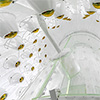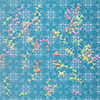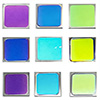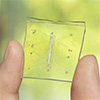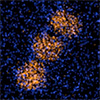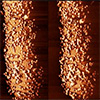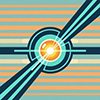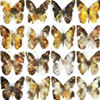Sep 29, 2025 Results from the LUX-ZEPLIN experiment mark a major step in defining what dark matter can and cannot be. (Nanowerk News) Determining the nature of dark matter, the invisible substance that makes up most of the mass in our universe, is one of the greatest puzzles in physics....
MOF sensor platform identifies gases more accurately with a ‘speed camera’ system
KU leuven. "Sensor identifies gases more accurately with a 'speed camera' system." Nanowerk, 29 September 2025, https://www.nanowerk.com/nanotechnology-news3/newsid=67771.php. KU leuven. (2025, September 29). Sensor identifies gases more accurately with a 'speed camera' system. Nanowerk. https://www.nanowerk.com/nanotechnology-news3/newsid=67771.php KU leuven, "Sensor identifies gases more accurately with a 'speed camera' system," Nanowerk, September 29, 2025,...
MXene coatings outperform metals for vivid structural color
Sep 29, 2025 MXene thin films deliver brighter, more tunable structural colors and a wider color range than conventional materials, enabling scalable high-performance coatings for sensors, displays, and security features. (Nanowerk Spotlight) Tilt a modern banknote under light and the color shifts. These effects are not created by pigments but...
Technique makes complex 3D printed parts more reliable
Sep 29, 2025 Researchers developed a method for models to factor in 3D printing limits, enabling materials to perform much closer to their intended design. (Nanowerk News) People are increasingly turning to software to design complex material structures like airplane wings and medical implants. But as design models become more...
Lung-on-a-chip mimics function and self-defense
Sep 29, 2025 On a clear polymer chip, soft and pliable like a gummy bear, a microscopic lung comes alive - expanding, circulating, and, for the first time, protecting itself like a living organ. (Nanowerk News) On a clear polymer chip, soft and pliable like a gummy bear, a microscopic...
First real-time nanoscale observation of iron formation using hydrogen plasma
University of Minnesota. "First real-time nanoscale observation of iron formation using hydrogen plasma." Nanowerk, 29 September 2025, https://www.nanowerk.com/nanotechnology-news3/newsid=67766.php. University of Minnesota. (2025, September 29). First real-time nanoscale observation of iron formation using hydrogen plasma. Nanowerk. https://www.nanowerk.com/nanotechnology-news3/newsid=67766.php University of Minnesota, "First real-time nanoscale observation of iron formation using hydrogen plasma," Nanowerk,...
Startling images show how antibiotic pierces bacteria’s armor
Sep 29, 2025 Researchers have shown for the first time how life-saving antibiotics called polymyxins pierce the armour of harmful bacteria. (Nanowerk News) A team led by UCL (University College London) and Imperial College London researchers has shown for the first time how life-saving antibiotics called polymyxins pierce the armour...
Reconfigurable logic takes organic electronics beyond miniaturization limits
Sep 29, 2025 A single organic device reconfigures as transistor, rectifier and logic gate, offering compact circuits with higher functional density for flexible and lightweight electronics. (Nanowerk Spotlight) Electronics have advanced by shrinking their basic building block, the transistor. Modern chips now contain billions of these switches, each one measured...
X-ray activated gel kills deep-tissue infections without antibiotics
Sep 28, 2025 An injectable gel activated by low-dose X-rays delivers sustained antibacterial effects in deep tissue by generating reactive oxygen species, offering a non-antibiotic strategy for hard-to-treat infections. (Nanowerk Spotlight) Medicine still has no reliable way to eliminate a bacterial infection once it is embedded deep in tissue and...
Sustainable generative AI with novel light-based system
Sep 27, 2025 Advance in optical computing may lead to ultrafast and secure image generators while using less energy. (Nanowerk News) Today’s popular chatbots and image generators have a severe downside for the environment. These examples of generative artificial intelligence leave a substantial carbon footprint due to outsized energy demands....

